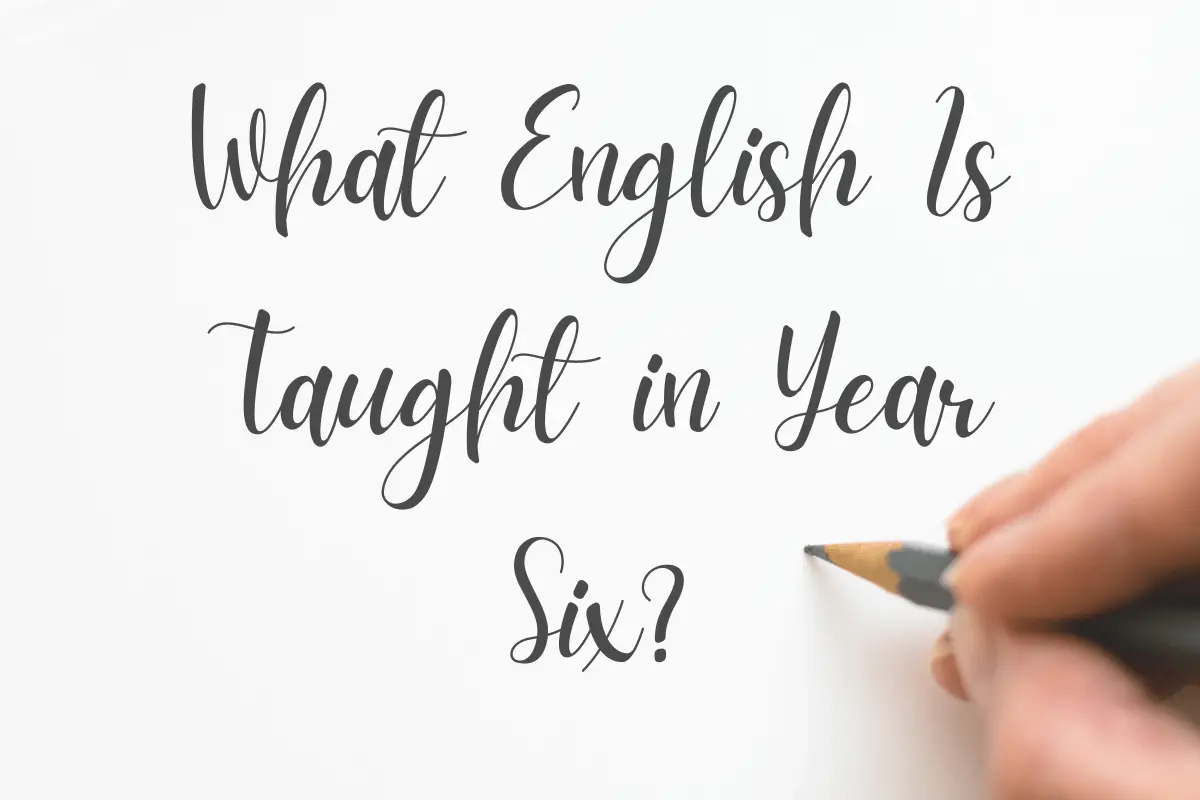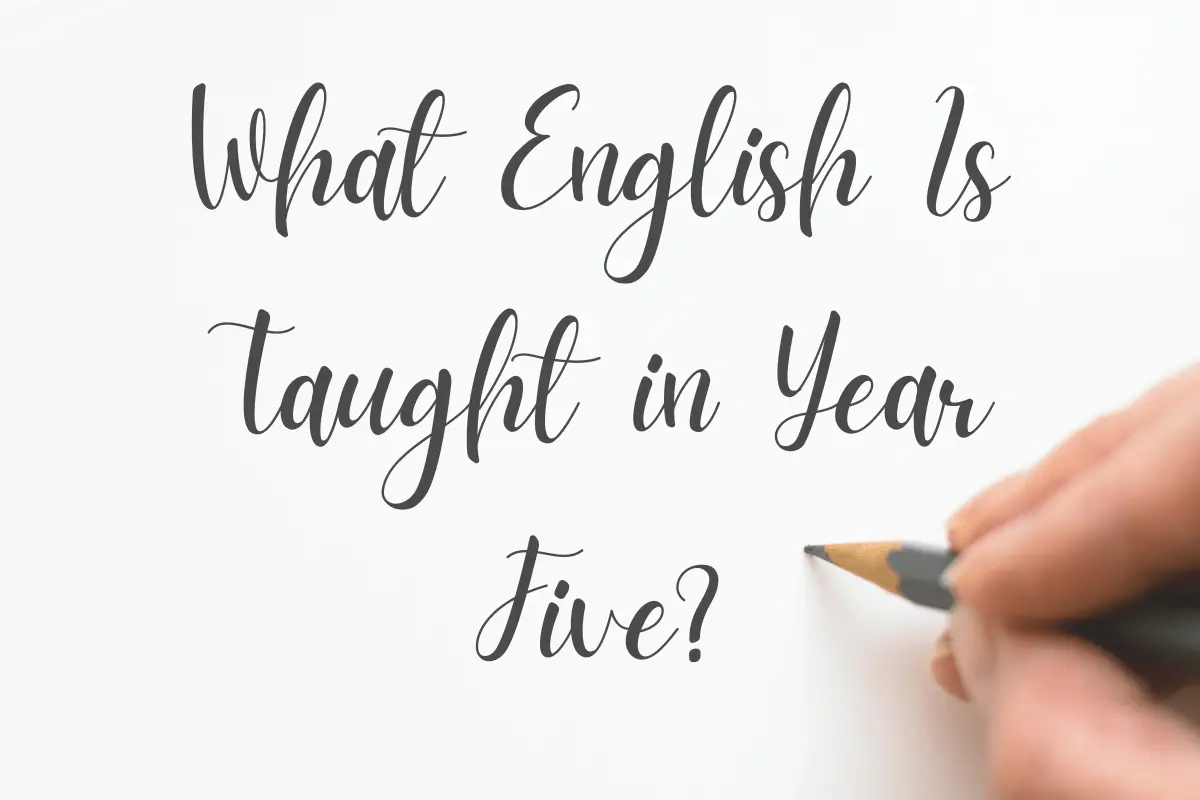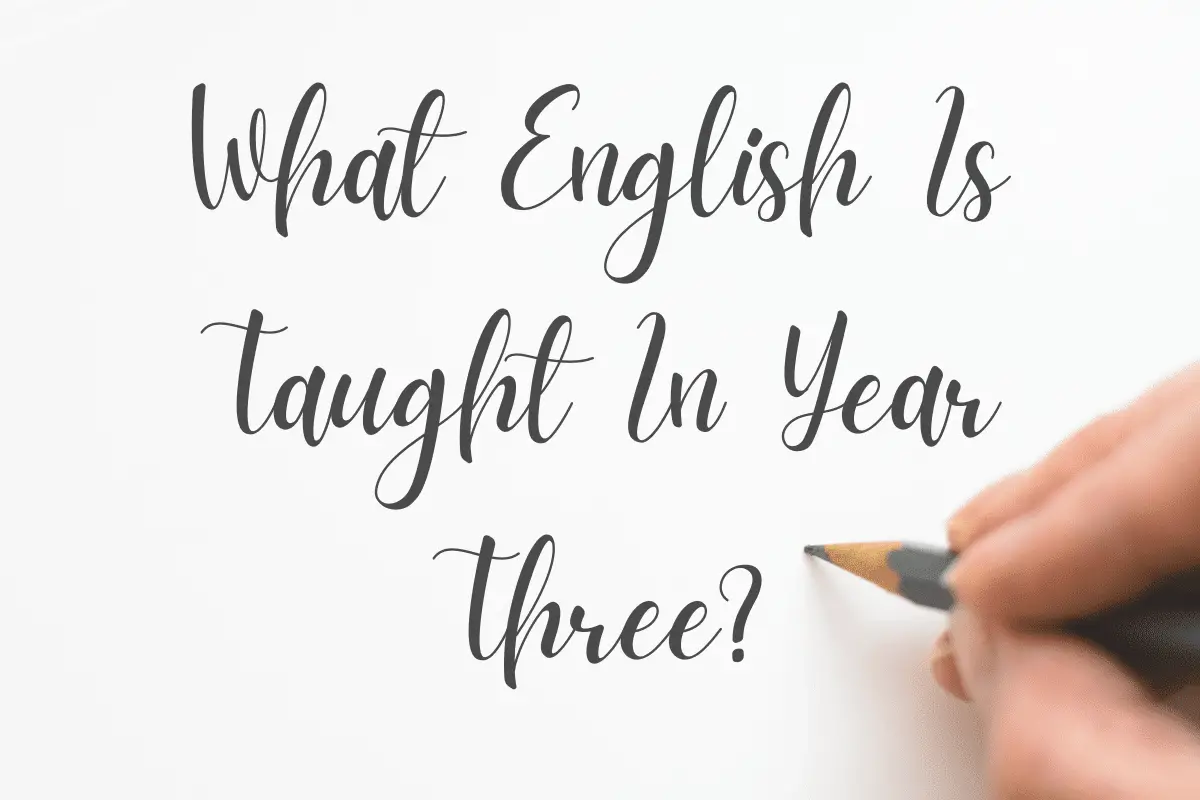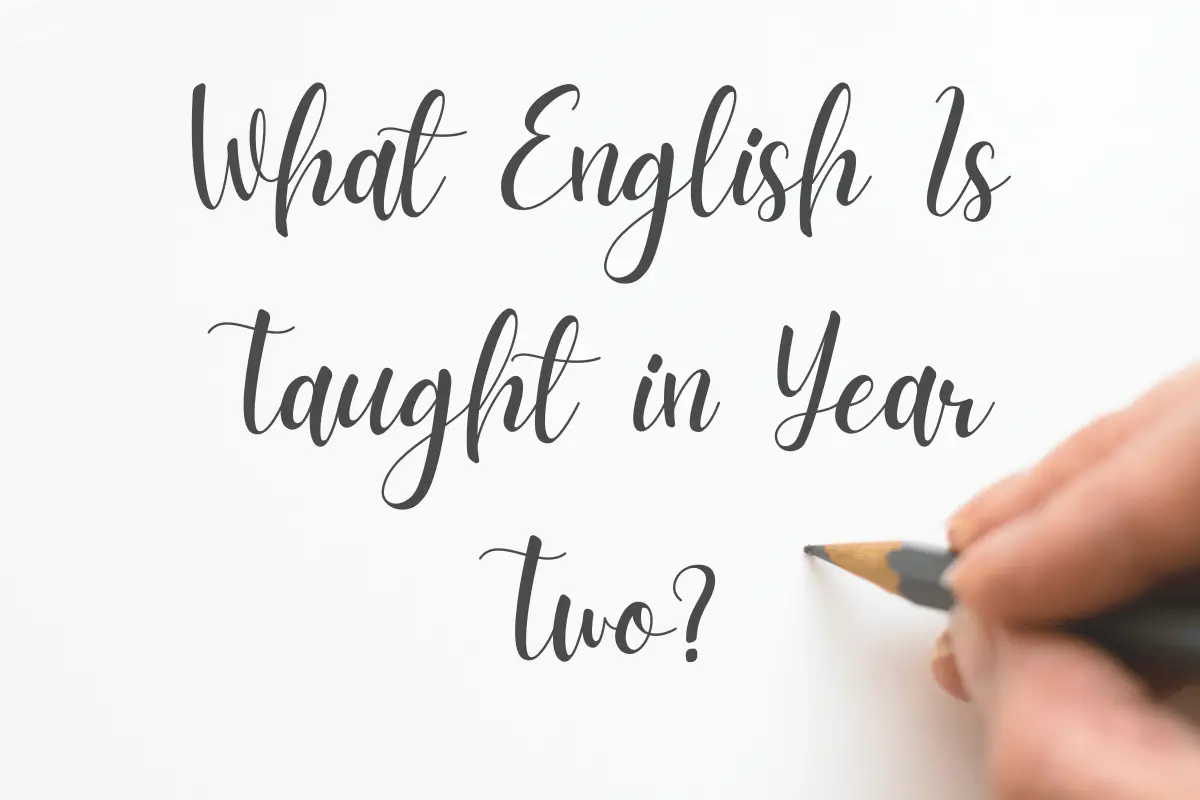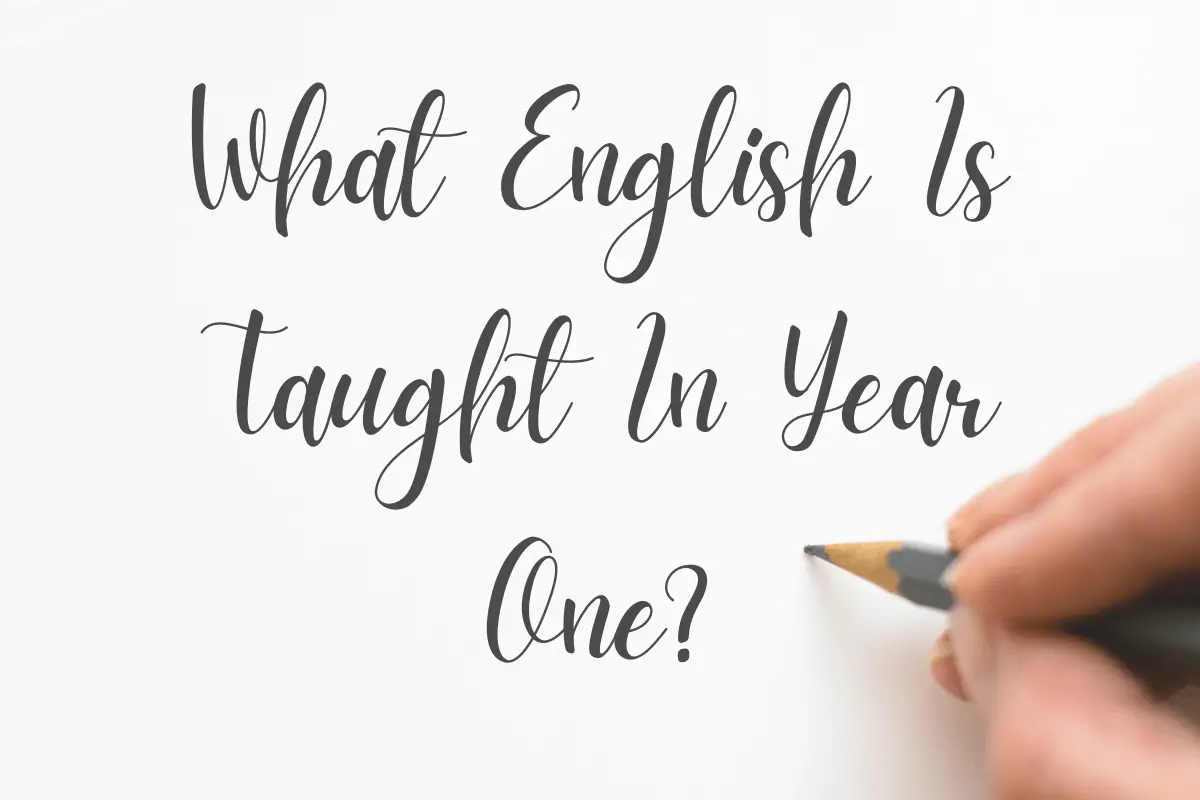Teaching English grammar can be daunting for any new or experienced teacher, but mastering the concept of subordinate clauses is vital in helping students develop their writing skills.
Subordinate clauses often need to be understood, so it’s essential to take time and explain the fundamentals of these concepts.
With the right approach and understanding, teachers can boost student ability and confidence in sentence construction! This blog post will discuss why teaching subordinate clauses is essential and offer helpful tips for making learning easy and fun.
Related: For more, check out our article on The Differences Between Dependent and Independent Clauses here.
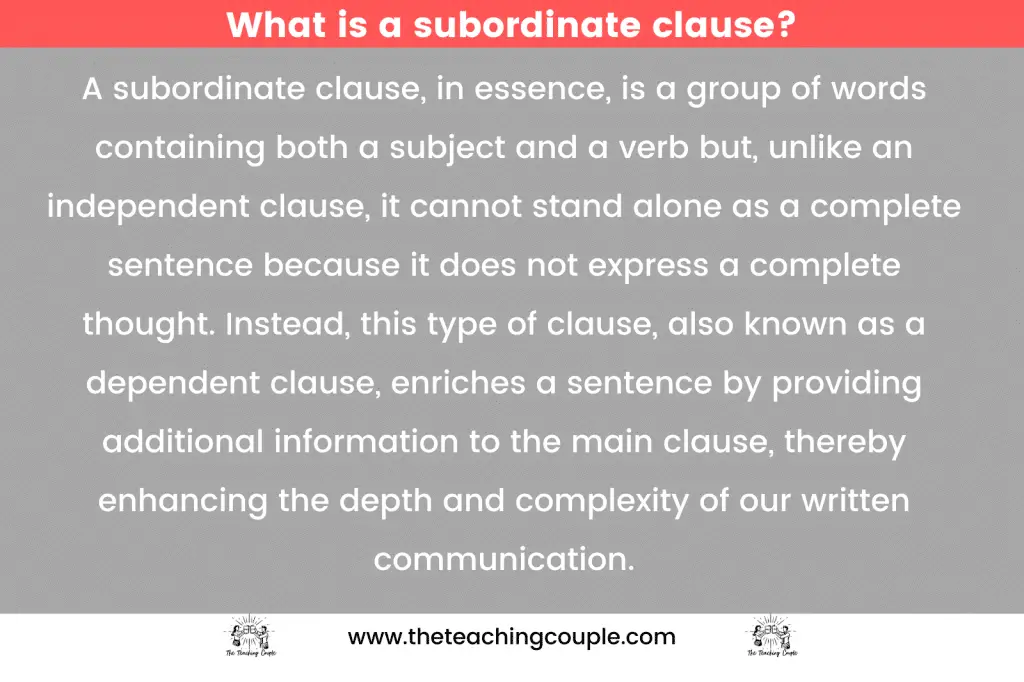
What Are Clauses?
A clause is a group of related words that contains both a subject and a verb. A clause can form part of a sentence or stand alone as its independent thought. There are two types of clauses: subordinate clauses and main clauses.
Subordinate Clauses
Subordinate and dependent clauses cannot stand alone as their thoughts because they do not express a complete idea. They must be linked to an independent clause to form a grammatically correct sentence.
An example of a dependent clause is: “When the sun goes down…” Subordinate clauses are usually marked by one of the following subordinating conjunctions: when, since, although, if, because and until.
- I wanted to go to the beach when the sun was setting.
- She didn’t like playing tennis because she always lost.
- We were all excited when the results were announced.
- The sky was darkening, although it wasn’t yet night.
- He decided to stay in the city until he had saved enough money.
- The power went out since there was a storm coming.
- She couldn’t leave yet because her boss had asked her to stay until five o’clock.
- You can join us if you get here before nine o’clock.
- He thanked them for their hospitality before going on his way.
- Don’t worry, we will only leave you behind if you can make it in time.
Main Clauses
Main clauses (sometimes called independent or principal clauses) express a complete thought and can stand on their own without the help of another clause.
Examples include: “The dog barked all night long” and “She decided to take a break from studying.” Main clauses are permanently joined with a coordinating conjunction (for, but, nor, yet, or so).
- We went to the store to buy some groceries.
- She moved out of her house because she got a new job.
- He drove down the highway, trying to find his way home.
- The music was playing loudly, and everyone was dancing.
- We couldn’t get a seat in the restaurant, so we ate outside.
- The protesters chanted their message until the police arrived.
- They talked for hours about everything under the sun.
- She flew back to New York and started a new life there.
- He worked through the night so he could finish on time.
- The train left the station promptly at eleven o’clock sharp.
What Is The Difference Between Subordinate Clauses and Main Clauses?
Subordinates (dependent clauses) cannot stand alone as their thoughts because they do not express a complete idea. They must be linked to an independent clause to form a grammatically correct sentence.
Examples of subordinate clauses include: “When the sun goes down…”, usually marked by one of the following subordinating conjunctions: when, since, although, if, because and until.
Main clauses (sometimes called independent or principal clauses) express a complete thought and can stand on their own without the help of another clause.
Examples include: “The dog barked all night long” and “She decided to take a break from studying.” Main clauses are permanently joined with a coordinating conjunction (for, but, nor, yet, or so).
How to Teach Subordinate Clauses
Subordinate clauses are an essential part of the language that is often overlooked or taken for granted. Teaching subordinate clauses can give students the skills they need to become better writers and communicators. Here are some tips on how to prepare this essential grammar element:
- Provide examples from literature and other media sources – Showing these examples will give students a visual representation of how subordinate clauses work together with the rest of the sentence structure to create meaning.
- Use fill-in-the-blank exercises – These activities help students practice the usage of subordinate clauses and gain a better understanding of basic grammar rules.
- Use role-playing scenarios – Practice makes perfect when mastering subordinate clauses! Have two actors discuss one specific topic, so students can see how subordinate clauses change or enhance a sentence’s meaning when added together with different parts of speech.
- Give clear explanations – Explain why confident word choices are made or why specific sentences are constructed in certain ways, so students can understand how subordinate clauses affect their writing.
By following these simple steps, teachers can ensure that their students understand the basics of using subordinate clauses and how they can be used effectively in their writing.
Examples in Literature
- In the famous movie “Toy Story,” the catchphrase of Buzz Lightyear is “To infinity and beyond!” The subordinate clause here is “beyond,” which adds more meaning to the phrase.
- In J.R.R Tolkien’s famous novel “The Hobbit,” a favourite quote reads: “It’s a dangerous business, Frodo, going out your door. You step onto the road, and if you don’t keep your feet, there’s no knowing where you might be swept off to.” The subordinate clause here is “where you might be swept off to,” which conveys a sense of danger and uncertainty to the sentence.
- For example, the classic fairytale of Cinderella begins with: “Once upon a time, there was a beautiful girl named Cinderella whose father had died.” The subordinate clause is “whose father had died,” adding a sense of sadness and context to the story.
FAQ
Q: What is a subordinate clause?
A: A subordinate clause is an essential part of the language that helps modify or qualify a sentence’s meaning by expressing additional information. Subordinate clauses are typically formed with words like “that,” “which,” and “who.”
Q: How can teaching subordinate clauses help students?
A: Teaching students about subordinate clauses can help them become better writers and communicators by understanding basic grammar rules and how to use them effectively in their writing. It also gives students the skills to form more complex sentences that convey a different thought or idea.
Q: What activities can be used to teach subordinate clauses?
A: Activities such as providing examples from literature and other media sources, using fill-in-the-blank exercises, role-playing scenarios, and giving clear explanations can all be used to help teach students about subordinate clauses.

